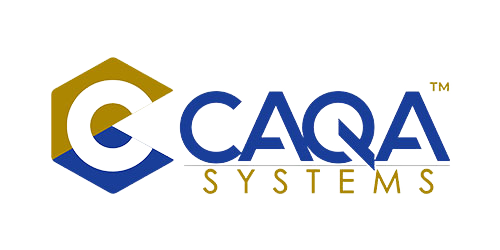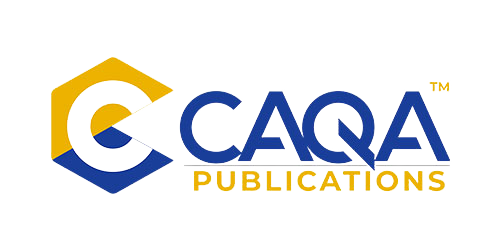Today marks a significant moment in the history of vocational education in Victoria, as TAFE teachers from the state's 12 standalone Technical and Further Education (TAFE) institutes stage a stopwork action. This unprecedented move is driven by an urgent need to address long-standing issues concerning pay, workload, stress, and funding, which are exacerbating an already critical shortage of TAFE teachers. This article examines the causes, implications, and potential solutions to this crisis, drawing on the latest findings and statements from key stakeholders.
The Historical Context
The last time TAFE teachers in Victoria undertook industrial action of this magnitude was in 2008. Since then, the sector has faced numerous challenges, including funding cuts, increased administrative burdens, and heightened stress levels. The current stopwork action is not just a reaction to immediate grievances but a culmination of years of unresolved issues. It highlights a systemic problem that requires urgent government intervention.
The Catalyst: The State of Our TAFEs Report
The Australian Education Union (AEU) has released the "State of Our TAFEs" report, providing a stark insight into the deteriorating conditions within Victoria's TAFE system. Based on a survey of 490 TAFE teachers, the report reveals alarming statistics:
- 71% of TAFE teachers considered leaving their job in 2023 due to unsustainable workloads, high stress, inadequate funding, and poor pay.
- 40% of teachers expect to cease working as TAFE teachers by 2029, just five years away.
- 66% of teachers feel that their pay and working conditions do not reflect their professional value or the work they do.
- 79% report a shortage of teachers in their department, citing reasons such as better pay and conditions in other industries, excessive workloads, stress, and poor funding.
- 53% have seen an increase in class sizes over the past two years, with 54% indicating that these larger classes present occupational health and safety (OH&S) risks.
The Broader Impact: Skill Shortages and Economic Consequences
The Victorian government's own Jobs and Needs Training Report underscores the importance of vocational education teachers, ranking them as the third highest occupation for new workers to be trained in, after motor mechanics and aged and disability care workers. The shortage of TAFE teachers directly impacts the ability to train new workers in these critical fields, exacerbating existing skill shortages across the state.
Without sufficient TAFE teachers, Victoria faces a cascade of economic and social challenges:
- Construction and Trade: A lack of trained tradespeople will slow down essential infrastructure projects, including housing developments.
- Healthcare and Aged Care: Insufficient personal care and disability workers will strain an already overburdened healthcare system.
- Early Childhood Education: A shortage of early childhood educators will affect the quality of education and care provided to young children.
Escalating Industrial Action
If the Victorian government, led by the Allan Labor Government, fails to address these concerns with a decent pay and conditions offer, TAFE teachers are prepared to escalate their industrial action. Today's stopwork action is the beginning of a planned series of escalations, which could culminate in a 24-hour stopwork action if the government does not respond adequately.
The AEU Victorian Branch President, Meredith Peace, emphasised the gravity of the situation: "We have been at the negotiating table for two years trying to get a pay and conditions deal that addresses these concerns, but the Allan Labor Government has failed to provide a decent offer."
The Financial Disparity
One of the core issues driving the current unrest is the financial disparity between TAFE teachers and their counterparts in the school system. By 1 July 2024, TAFE teachers in Victoria will receive $7,742 less than similarly experienced school teachers. This pay gap, coupled with the increased workload and stress, makes it difficult for TAFE institutes to attract and retain qualified teachers.
Underfunding of TAFEs
The Victorian Labor party came to power nearly a decade ago with a promise to revitalise the TAFE sector. However, the reality has been starkly different. Victoria’s TAFEs have been the lowest funded in the country for nine of the last ten years. This chronic underfunding has led to a decline in student wellbeing and engagement, with teachers reporting a lack of time, resources, equipment, and professional development opportunities to adequately support their students.
Teacher Shortages and Student Wellbeing
The shortage of TAFE teachers not only affects the delivery of vocational education but also impacts student wellbeing. Larger class sizes and overburdened teachers mean that students do not receive the individual attention and support they need. According to the AEU report, many TAFE teachers feel they do not have the necessary resources to maintain high standards of education, further contributing to the decline in student engagement and outcomes.
The Road Ahead: Recommendations for Addressing the Crisis
Addressing the TAFE teacher crisis in Victoria requires a multifaceted approach that includes immediate financial investments, policy reforms, and long-term strategic planning. Here are some key recommendations:
- Immediate Pay Increase: Align TAFE teachers' salaries with those of similarly experienced school teachers to ensure parity and attract more professionals into the vocational education sector.
- Reduce Administrative Burdens: Implement measures to decrease the administrative workload on TAFE teachers, allowing them to focus more on teaching and student support.
- Increase Funding for TAFEs: Boost funding for TAFE institutes to provide better resources, equipment, and professional development opportunities. This will help improve the overall quality of vocational education and support teacher retention.
- Smaller Class Sizes: Introduce policies to cap class sizes, ensuring a safer and more effective learning environment for both teachers and students.
- Strategic Recruitment and Retention Programs: Develop targeted recruitment and retention programs to address the teacher shortage. This could include incentives for new teachers, as well as support and development opportunities for existing staff.
- Engage in Meaningful Negotiations: The government must engage in good faith negotiations with the AEU to address the concerns of TAFE teachers and develop a comprehensive plan to improve their working conditions.
The Role of Government and Stakeholders
The responsibility for resolving the TAFE teacher crisis does not rest solely with the government. It requires a concerted effort from all stakeholders, including educational institutions, industry partners, and the community at large. Here’s how each stakeholder can contribute:
- Government: Allocate adequate funding, implement supportive policies, and engage in transparent negotiations with teacher unions.
- Educational Institutions: Advocate for their teachers, implement best practices in administrative efficiency, and support professional development.
- Industry Partners: Collaborate with TAFE institutes to provide practical training opportunities and support educational initiatives.
- Community: Recognise the value of vocational education and support efforts to improve the TAFE system.
A Call to Action
The historic stopwork action by Victoria’s TAFE teachers is a wake-up call for the Allan Government and all stakeholders involved in the vocational education sector. The data is clear: without significant improvements in pay, working conditions, and funding, the shortage of TAFE teachers will only worsen, impacting not just the teachers and students but the broader Victorian economy and society.
To prevent a full-blown crisis, immediate and decisive action is required. The government must put forth a fair pay and conditions offer that reflects the professional value of TAFE teachers and addresses their workload and stress concerns. Additionally, long-term investments in the TAFE sector are essential to ensure that vocational education can continue to play its vital role in training the future workforce of Victoria.
The stopwork action is a significant step, but it should also be a step towards meaningful change. By addressing the root causes of the TAFE teacher shortage and implementing sustainable solutions, Victoria can secure a brighter future for its vocational education sector and, in turn, its economy and society.
As we watch how this situation unfolds, it is crucial for all stakeholders to remain engaged and supportive of the efforts to resolve this crisis. The future of vocational education in Victoria—and the many industries and communities that depend on it—hangs in the balance. Let us all work together to ensure that TAFE teachers receive the respect, recognition, and support they deserve.
Key Takeaways:
- Immediate Action Needed: Align TAFE teachers' pay with school teachers and reduce administrative burdens.
- Increase Funding: Boost funding to improve resources, equipment, and professional development.
- Cap Class Sizes: Implement policies to ensure safer and more effective learning environments.
- Strategic Recruitment: Develop programs to attract and retain TAFE teachers.
- Stakeholder Collaboration: Government, institutions, industry, and community must work together.
The stopwork action is more than a protest; it is a plea for the future of vocational education in Victoria. Let us heed this call and take the necessary steps to ensure that TAFE teachers can continue to educate and inspire the next generation of skilled workers.


































